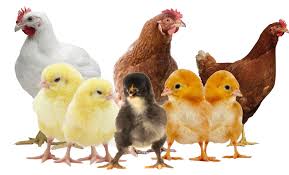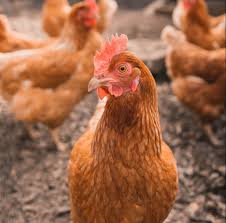
A very important skill for all poultry stock persons to have is the ability to differentiate between healthy and sick birds. It is normal when a flock is diseased to find healthy birds and those with varying degrees of illness. Therefore, it is necessary to be able to tell as early as possible when some of the birds in the pen are sick.
 Learn More
Learn MoreWhile the manager may be able to identify some diseases from available evidence, it is unlikely that they will be able to identify all. However, the sooner a disease is noticed in the flock, the sooner appropriate action can be taken. This may include initiation of a medication program, send specimens to the laboratory for examination and diagnosis, and/or to call in expert advice. Early action not only gives the manager a chance to cure the condition but it may help prevent it spreading to other stock.
A healthy bird will:
- Be active and alert.
- Be normal size/weight for the strain, age and sex.
- Have no lameness or paralysis.
- Have no injuries.
- Have no deformities.
- Have no discharges from the nostrils or eyes.
- Have no stained feathers around the vent.
- Have no swellings.
- Generally have good plumage related to the whether in a moult or in lay.
A sick bird will show some or all of the following signs:
- Isolation – sick animals usually seek a quiet place out of the way of others.
- Hunched stance – sick birds often have a hunched stance with ruffled feathers and eyes partially closed.
- Diarrhea – usually evidenced by stained feathers in the vent region.
- Paralysis – of the leg(s), wing(s) or neck.
- Sneezing and/or coughing; there may be nasal discharge.
- Blood in the faeces.
- Swellings – of the joints.
- Injuries.
- Loss of weight – this may be pronounced if the condition is a chronic one e.g. Marek’s Disease.
- Unexpected changes to the food and water consumption – often the first signs of illness.
- Slower growth or a drop in egg production.

Conclusion
It is normal to find a continuous low level of mortality and a small number of unthrifty birds in the poultry flock. Even though this does occur, attempts should be made to reduce even this “normal” mortality. Normal levels will be in the vicinity of 4% to 40 days for meat chickens, less than 5% to point of lay for layer and breeder replacements and less than 1% per 28 days for layers and breeders.
















Hello Dr… This your write up came at a very right time for me. My laying birds all of a sudden started showing signs of sickness as mentioned above. Sleeping most of the time, serious reduction in laying from 40 crates to 27 at the moment and also mortality rate is like 4 birds in a day. I have spent so much on drugs and lab tests but. Seem all is not working at the moment.
I am thinking of winding the farm up,but I just can’t because of the passion I have for agric.
Pls advice.
Thank you
Ladipo
Speed farms LTD.
Hey my brother! You really should not lose hope. All businesses come with serious risk and times of hardship. This is your own time but it will pass. Get across to some experts to visit your farm to asses the situation and help. This is the best os times for you if you use it well. i am glad that you have passion for the business. PASSION, IN CASE YOU DON’T KNOW MEANS WHAT YOU ARE WILLING TO SUFFER FOR!
Please check out this video and subscribe too https://www.youtube.com/watch?v=YwReCWPIGM4
[…] Read Also : Practical Ways To Recognise Sick And Healthy Birds In Poultry Farming […]